Human rights in Canada
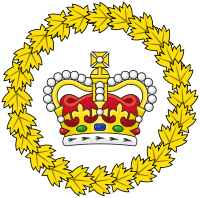 |
|---|
| This article is part of a series on the politics and government of Canada |
| Government |
|
|
|
Human rights in Canada have come under increasing public attention and legal protection since World War II. Prior to that time, there were few legal protections for human rights. The protections which did exist focussed on specific issues, rather than taking a general approach to human rights. There were notable events in Canada's history which would today be considered violations of human rights.
Controversial human rights issues in Canada have included patient rights, freedom of speech, freedom of religion, parents' rights, children's rights, abortion rights vs rights of the unborn, minority rights, majority rights, rights of the disabled, aboriginal rights, tenant rights and economic, social and political rights.[1]
Outline of current human rights laws
The events of World War II, and the treatment of individuals and groups by some governments during that period, led to an increased international and national awareness of the need to protect human rights. The trend to provide legal protections for human rights began with the passage of the Saskatchewan Bill of Rights by the province of Saskatchewan in 1947. Other provinces began to enact comprehensive human rights laws. At the federal level, Canada was one of the members of the United Nations which voted to adopt the Universal Declaration of Human Rights in 1948. In 1960, the Parliament of Canada enacted the Canadian Bill of Rights. The trend towards legal protections for human rights culminated in the enactment of the Canadian Charter of Rights and Freedoms in 1982, an entrenched constitutional charter of human rights.
Human rights in Canada are now given legal protections by the dual mechanisms of the Charter and the statutory human rights codes, both federal and provincial. The Charter provides individuals with constitutional rights which governments must respect. The statutory human rights codes provide individuals with rights binding on governments, and also in some cases in the private sector, such as in services, employment, education and housing. The Canadian Human Rights Act applies to the federal government and to activities within federal legislative jurisdiction, and the provincial codes apply to the provincial governments and to activities within provincial jurisdiction. Although human rights codes are statutory in nature, the Supreme Court of Canada has held that they are quasi-constitutional in nature, taking priority over other statutes.
Charter rights are enforced by legal actions in the criminal and civil courts, depending on the context in which a Charter claim arises. Claims under the human rights laws are of a civil nature. They are normally investigated by a human rights commission under the applicable human rights law, and are adjudicated either by a human rights tribunal or by the court of first instance. A ruling on a human rights claim can be appealed through the normal court process, ultimately to the Supreme Court of Canada.
Historical development of human rights laws
Colonial period
The first legal protection for human rights in Canada related to religious freedom. The Articles of Capitulation of the town of Quebec, negotiated between the French and British military commanders after the fall of Quebec in 1759, provided a guarantee of "the free exercise of the Roman religion" until the possession of Canada was determined by the British and French governments.[2] A similar guarantee was included in the Articles of Capitulation of Montreal the next year.[3] The two guarantees were formally confirmed by Britain in the Treaty of Paris, 1763,[4] and then given statutory protection in the Quebec Act, 1774.[5] The result was that the British subjects in Quebec had greater guarantees of religious liberty at that time than did the Roman Catholic inhabitants of Great Britain and Ireland, who would not receive similar guarantees until Catholic emancipation in 1829.[6]
Nearly a century later, the Province of Canada passed similar legislation, ending the establishment of the Church of England in the province, and recognizing instead the principle of "legal equality among all religious denominations". The Act provided that the "free exercise and enjoyment of religious profession and worship" was protected by the Constitution and laws of the Province.[7]
Confederation and onwards
Constitutional framework
In 1867, Canada was created by the British North America Act, 1867 (now named the Constitution Act, 1867).[8] In keeping with British constitutional traditions, the Act did not include an entrenched list of rights, other than specific rights relating to language use in legislatures and courts,[9] and provisions protecting the right of certain religious minorities to establish their own separate and denominational schools.[10] Canadian law instead followed the British constitutional approach in which the (unenumerated) "Rights of Englishmen" had traditionally been defended by all the branches of the government (Parliament, the courts, and the Crown) collectively and sometimes in competition with each other. However, 19th century political and legal thought also emphasized the importance of freedom of contract and property rights as important aspects of liberty and the rule of law. This approach meant that what are now viewed as human rights concerns, based on personal circumstances, would be considered of lesser importance than contractual and property rights.
Human rights issues in the first seventy years of Canadian history thus tended to be raised in the framework of the constitutional division of powers between the federal and provincial governments. A person who was affected by a provincial law could challenge that law in the courts, arguing that it intruded on a matter reserved for the federal government. Alternatively, a person who was affected by a federal law could challenge it in court, arguing that it intruded on a matter reserved for the provinces. In either case, the focus was primarily on the constitutional authority of the federal and provincial governments, not on the rights of the individual.
The division of powers is also the reason that the term "civil rights" is not used in Canada in the same way as it is used in other countries, such as the United States. One of the main areas of provincial jurisdiction is "Property and civil rights",[11] which is a broad phrase used to encompass all of what is normally termed the civil law, such as contracts, property, torts/delicts, family law, wills, estates and successions and so on. This use of the phrase dates back to the Quebec Act, 1774.[5] Given the broad, established meaning of "civil rights" in Canadian constitutional law, it has not been used in the more specific meaning of personal equality rights. Instead, the terms "human rights" / "droits de la personne" are used.
Early cases
Union Colliery Co. v. Bryden (1899)
In Union Colliery Co of British Columbia v Bryden a shareholder of Union Colliery Co. accused the company of violating the Coal Mines Regulation Act. That law had been passed by the provincial Legislature of British Columbia and prohibited the hiring of people of Chinese origin, using an ethnic slur in the legislation.[12] The company successfully challenged the constitutionality of the Act on the grounds that it dealt with a matter of exclusive federal jurisdiction, namely "Naturalization and Aliens".[13][14] In reaching this conclusion, the Judicial Committee of the Privy Council, at that time the highest court for the British Empire, found that evidence which had been led at trial about the reliability and compentence of the Chinese employees of the colliery was irrelevant to the constitutional issue. The personal circumstances and ability of those employees did not relate to the issue of federal and provincial jurisdiction.
Cunningham v Homma (1902)
The decision in Union Colliery did not establish any general principle of equality based on race or ethnicity. In each case, the issue of race or ethnicity was simply one fact the courts took into account in determining if a matter was within federal or provincial jurisdiction. For example, just three years later, in the case of Cunningham v Homma, a provincial law prohibiting people of Chinese, Japanese or Indian descent from voting in provincial elections was held to be constitutional.[15] The Judicial Committee rejected a challenge to the provincial law brought by a naturalized Japanese-Canadian, Tomekichi Homma, who had been denied the right to vote in British Columbia provincial elections. The Judicial Committee held that control of the franchise in provincial elections came within the province's exclusive jurisdiction to legislate with respect to the constitution of the province. Again, the personal circumstances of the individual, in this case whether naturalised or native-born, were not relevant to the issue of the constitutional authority of the province. There was no inherent right to vote.[16]
Quong Wing v R (1914)
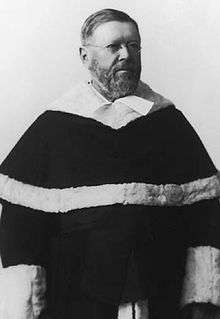
Similarly, in the case of Quong Wing v R, the Supreme Court upheld a Saskatchewan law which prohibited businesses owned by anyone of Japanese, Chinese or other East Asian background from hiring any "white woman or girl" to work in the business.[17][18] The Court, by a 4–1 majority, found that the province had jurisdiction over businesses and employment, or alternatively that the law in question was in relation to local public morality, another area of provincial jurisdiction.[19] The judges in the majority acknowledged that the law had an effect on some Canadians based on their race or ethnic origins, but that was not sufficient to take the case outside of provincial jurisdiction. The dissenting judge, Justice Idington, was the only one who would have struck down the statute, but as in the other cases, he based his conclusion on the division of powers, not on the rights of the individual. He would have held that the provincial Act limited the statutory rights granted by the federal Naturalization Act, and was therefore beyond provincial jurisdiction.
Christie v York Corporation (1940)
Canadian courts also upheld discrimination in public places based on freedom of contract and property rights. For example, in Christie v York Corporation,[20] the plaintiff, a black man, was denied service at a bar at the Montreal Forum. He sued for damages, arguing that the tavern was under a duty to provide services to all members of the public. The case reached the Supreme Court, which held by a 4-1 majority that the owner of the business had complete freedom of commerce and could refuse service to whomever it wished, on whatever grounds it wished. The lone dissenter, Justice Davis, would have held that the Quebec statute regulating liquor sales to the public required restaurants to provide their service to all customers, without discrimination.
The King v Desmond (1946)
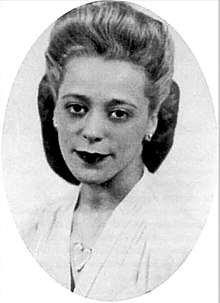
Viola Desmond, a black Nova Scotian, went to see a movie in a theatre in New Glasgow, Nova Scotia. The owner of the theatre would only allow white people to sit on the main floor. Non-whites had to sit in the gallery. Desmond, who was from out of town, did not know of the policy. She bought a ticket for the movie and went onto the main floor. When the theatre employees told her to go to the gallery, she refused. The police were called and she was forcibly removed. Desmond spent a night in jail and was fined $20, on the basis that by sitting on the main floor when her ticket was for the gallery, she had deprived the provincial government of the additional tax for the main floor ticket: one cent. She sought to challenge her treatment, by an application for judicial review of the tax ruling. The court dismissed the challenge on the basis that the tax statute was neutral with respect to race. The judge suggested in his decision that the outcome might have been different if she had instead appealed the conviction, on the basis that the law was being used improperly by the theatre owner to enforce a "Jim Crow" type of segregation.[21]
In 2018, the Bank of Canada announced that Viola Desmond would be the person shown on the new ten-dollar note.[22][23][24]
Noble v Alley (1955)
Noble v. Alley was a challenge to a restrictive covenant for the sale of land at a cottage resort. The owner of the land had bought it with a requirement from an earlier owner that the land not be sold to Jewish or non-white people. The owner wished to sell it to an individual who was Jewish. The owner challenged the restrictive covenant, over the opposition of other residents in the cottage resort. The Supreme Court held that the covenant was not enforceable on the basis that it was too vague, and that restrictive covenants on land had to be related to land use, not the personal characteristics of the owner.[25]
Implied Bill of Rights
In 1938 there was a development in judicial protection of rights. The government of the province of Alberta had passed a series of laws to implement its social credit platform, and had come under heavy media criticism. In response, the Legislature enacted the Accurate News and Information Act, which would give the government the power to direct media's coverage of the government. The federal government referred several of the Alberta bills to the Supreme Court for a reference opinion. Three of the six members of the Court found that public comment on the government, and freedom of the press, are so important to a democracy that there is an implied bill of rights in Canada's Constitution, to protect those values. The Court suggested that only the federal Parliament could have the power to impinge on political rights protected by the implied bill of rights. The Accurate News and Information Act was therefore unconstitutional.[26] The Supreme Court has not, however, used the "implied bill of rights" in very many subsequent cases.
Enactment of modern human rights legislation
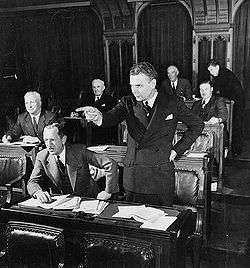
Beginning in 1947, the provinces began adopting human rights legislation: the Saskatchewan Bill of Rights (1947), Ontario (1962), Nova Scotia (1963), Alberta (1966), New Brunswick (1967), Prince Edward Island (1968), Newfoundland (1969), British Columbia (1969), Manitoba (1970) and Quebec (1975). In 1977, the federal government enacted the Canadian Human Rights Act. Also, many collective agreements between employers and trade unions include non-discrimination provisions.
Significant historical cases
In addition to these particular court cases, there were also general cases which arose in Canada, prior to the enactment of human rights legislation.
Komagata Maru incident
The Komagata Maru incident occurred 1914 when a group of Indians, all British subjects, arrived in Vancouver with the intention of settling in Canada.[27] They were denied entry because of their race.
One of the Sikh passengers, Jagat Singh Thind, was the youngest brother of Bhagat Singh Thind, an Indian-American Sikh writer and lecturer on "spiritual science" who was involved in an important legal battle over the rights of Indians to obtain U.S. citizenship (United States v. Bhagat Singh Thind).[28]
World War I treatment of Ukrainian Canadians
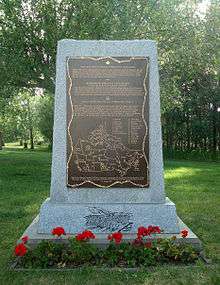
The Ukrainian Canadian internment was part of the confinement of "enemy aliens" in Canada during and for two years after the end of the First World War, lasting from 1914 to 1920, under the terms of the War Measures Act. About 4,000 Ukrainian men and some women and children of Austro-Hungarian citizenship were kept in twenty-four internment camps and related work sites – also known, at the time, as concentration camps.[29] Many were released in 1916 to help with the mounting labour shortage.
Chinese Head Tax and Chinese Immigration Act of 1923
The Chinese head tax was a fixed fee charged to each Chinese person entering Canada. The head tax was first levied after the Canadian parliament passed the Chinese Immigration Act of 1885 and was meant to discourage Chinese people from entering Canada after the completion of the Canadian Pacific Railway. The tax was abolished by the Chinese Immigration Act of 1923, which stopped Chinese immigration altogether, except for business people, clergy, educators, students, and other categories.[30]
World War II treatment of Japanese Canadians
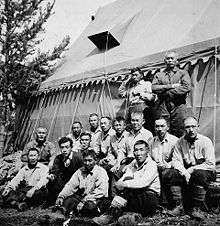
Japanese Canadian internment refers to confinement of Japanese Canadians in British Columbia during World War II. The internment began in December 1941, after the attack by carrier-borne forces of Imperial Japan on American naval and army facilities at Pearl Harbor. The Canadian federal government gave the internment order based on speculation of sabotage and espionage, although the RCMP and defence department lacked proof.[31] Many interned children were brought up in these camps, including David Suzuki, Joy Kogawa, and Roy Miki. The Canadian government promised the Japanese Canadians that their property and finances would be returned upon release; however, these assets were sold off cheaply at auctions.[32]
Cold War forced relocation
In the early 1950s and in the context of the Cold War, the federal government forcibly relocated 87 Inuit citizens to the High Arctic as human symbols of Canada's assertion of ownership of the region. The Inuit were told that they would be returned home to Northern Quebec after a year if they wished, but this offer was later withdrawn as it would damage Canada's claims to the High Arctic; they were forced to stay.[33] In 1993, after extensive hearings, the Royal Commission on Aboriginal Peoples issued The High Arctic Relocation: A Report on the 1953–55 Relocation.[34] The government paid compensation but has not apologised.[35]
PROFUNC
PROFUNC (1950–1983[36]), which stands for "PROminent FUNCtionaries of the communist party", was a Government of Canada third rail top secret plan to identify and intern Canadian communists and crypto-communists during the height of the Cold War.[37][38]
Residential schools
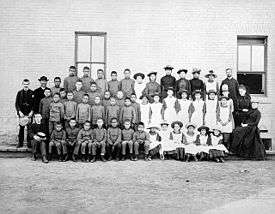
The Indian residential schools of Canada were a network of "residential" (boarding) schools for Aboriginal peoples of Canada (First Nations, Métis, and Inuit) funded by the Canadian government's Department of Indian Affairs, and administered by Christian churches, most notably the Catholic Church in Canada and the Anglican Church of Canada.[39] The system had origins in pre-Confederation times, but was primarily active following the passage of the Indian Act in 1876, until the mid-twentieth century. The last residential school was not closed until 1996.[39]
Re-settlement of indigenous groups
There have been numerous resettlement programs that spanned over a century and a half, whereupon the original agreements of Treaty territory had been revised without consultation with the indigenous groups who signed the treaties. For example, the Peguis Reserve, the largest land owning Cree Nation in Manitoba, was transposed from their territory (now known as Selkirk) to a swampy area approximately 150 km northwest, in the 1870s. The territory where they were removed from was a rich and fertile area to farm. Currently the territory they are on floods yearly.
International human rights claims
Separate schools
Three provinces, Alberta, Ontario, and Saskatchewan, are constitutionally required to operate separate and publicly funded schools.[10] Some argue that the separate school system discriminates by religion, although students attending these schools need not be Roman Catholic by faith. These are usually Roman Catholic schools which are run parallel to the public school system that historically had been either Protestant or Roman Catholic, but which in recent years has become secular. In addition to Roman Catholic school boards, Alberta, Saskatchewan, and Ontario each have one Protestant separate school district.
On November 5, 1999, the United Nations Human Rights Committee condemned Canada and Ontario for having violated the equality provisions (Article 26) of the International Covenant on Civil and Political Rights. The Committee restated its concerns on November 2, 2005, when it published its Concluding Observations regarding Canada's fifth periodic report under the Covenant. The Committee observed that Canada had failed to "adopt steps in order to eliminate discrimination on the basis of religion in the funding of schools in Ontario".
Bill 101 in Quebec
Bill 101 in Quebec is a collection of laws instituted in order to propagate the French language and restrict the use of English. In 1993, the United Nations Human Rights Committee ruled that Quebec's sign laws broke an international covenant on civil and political rights.[40] "A State may choose one or more official languages," the committee wrote, "but it may not exclude, outside the spheres of public life, the freedom to express oneself in a language of one's choice. The Committee accordingly concludes that there has been a violation of article 19, paragraph 2. Bill 101 itself was however considered as adhering to international standards for human rights and the complaint was ultimately rejected as "non-admissible" while recommending an amendment to the law concerning outdoors advertising.[41]
The current law specifies that commercial outdoor signs can be multilingual so long as French is markedly predominant.[42]
Assessments
Comparisons of provincial and territorial legislation
In January 2018, the Canadian Centre for Diversity and Inclusion released a report comparing provincial legislation regarding human rights. Every province includes slightly different "prohibited grounds" for discrimination, covers different areas of society (e.g. employment, tenancy, etc.), and applies the law slightly differently. For example, in Nunuvut, the Nunavut Human Rights Act directs the Nunavut Human Rights Tribunal to interpret the law so as not to conflict with the Nunavut Land Claims Agreement and to respect the principles of Inuit Qaujimajatuqangit, described as "Inuit beliefs, laws, principles and values along with traditional knowledge, skills and attitudes." Nunuvut is unique in Canada tying its humans rights code to an indigenous rather than a European-derived philosophical foundation.[43]
See also
Further reading
Among the leading works on human rights in Canada, which have added great complexity to the issue by exploring twentieth-century paradigms, are Christopher MacLennan, Toward the Charter: Canadians and the Demand for a National Bill of Rights (Montreal/Kingston: McGill-Queen's University Press, 2003); Ross Lambertson, Repression and Resistance: Canadian Human Rights Activists, 1930–1960 (Toronto: University of Toronto Press, 2005); and Dominique Clément, Canada's Rights Revolution: Social Movements and Social Change, 1937–82 (Vancouver: University of British Columbia Press, 2008). On the quest for anti-discrimination legislation in Ontario, see Ruth Frager and Carmela Patrias, "'This Is Our Country, These Are Our Rights': Minorities and the Origins of Ontario's Human Rights Campaign," Canadian Historical Review, vol. 82, no. 1 (March 2001), 1–35. On the situation in Montreal and Toronto, including the Catholic aspect and Cold War discourse, see Patrick Lacroix, "Immigration, Minority Rights, and Catholic Policy-Making in Post-War Canada", Histoire sociale/Social History, vol. 47, no. 93 (May 2014), 183–203. The situation in Quebec may best be explored through the events of the Quiet Revolution. At last, for yet further information, see Dominique Clément and Canada's Human Rights History.
References
- ↑ Human Rights Canada Archived December 3, 2008, at the Wayback Machine.
- ↑ Articles of Capitulation Demanded by Mr. de Ramsay, the King's Lieutenant, commanding the high and low Towns of Quebec, Chief of the military order of St. Lewis, to His Excellency, the General of the troops of His Britannic Majesty, September 18, 1759, article VI.
- ↑ Articles of Capitulation Between their Excellencies Major General Amherst, Commander in Chief of his Britannic Majesty's troops and forces in North-America, on the one part, and the Marquis de Vaudreuil, &c, Governor and Lieutenant-General for the King in Canada, on the other, September 8, 1760, article XXVII.
- ↑ Treaty of Paris, 1763, article IV.
- 1 2 Quebec Act, 1774, 14 Geo. III, c. 83 (UK).
- ↑ An Act for the Relief of his Majesty's Roman Catholic Subjects, 10 Geo. IV (1829), c. 7 (UK).
- ↑ An Act to repeal so much of the Act of the Parliament of Great Britain passed in the Thirty-first year of the Reign of King George the Third, and Chaptered Thirty-one, as relates to Rectories, and the presentation of Incumbents to the same, and for other purposes connected with such Rectories, Statutes of the Province of Canada, 14-15 Vict. (1851), c. 175, Preamble and s. 1.
- ↑ Constitution Act, 1867.
- ↑ Constitution Act, 1867, s. 133.
- 1 2 Constitution Act, 1867, s. 93.
- ↑ Constitution Act, 1867, s. 92(13).
- ↑ Coal Mines Regulation Act, RSBC 1897, c. 138, s. 4.
- ↑ Union Colliery Co. of British Columbia v. Bryden, [1899] UKPC 58, [1899] AC 580 (JCPC).
- ↑ Constitution Act, 1867, s. 91(25).
- ↑ Provincial Elections Act, RSBC 1897, c. 67, s. 8.
- ↑ Cunningham v Homma, [1902] UKPC 60, [1903] 9 AC 151 (JCPC).
- ↑ Quong Wing v R (1914), 49 SCR 44.
- ↑ An Act to prevent the Employment of Female Labour in Certain Circumstances, Statutes of Saskatchewan 1912, c. 17, s. 1.
- ↑ Constitution Act, 1867, s. 92(13), s. 92(16).
- ↑ Christie v York Corporation, [1940] S.C.R. 139.
- ↑ The King v Desmond (1947), 20 MPR 297 (NS SC), at 299–301.
- ↑ Bank of Canada: New Ten-Dollar Note features Viola Desmond.
- ↑ " 'Our family will go down in history': Desmond's sister moved by new $10 bill", CTV, March 8, 2018.
- ↑ Heritage Minute: Viola Desmond.
- ↑ Noble v Alley, [1951] SCR 64.
- ↑ Reference Re Alberta Statutes, [1938] SCR 100; appeal dismissed, [1938] UKPC 46.
- ↑ The Voyage of the Komagata Maru: the Sikh challenge to Canada's colour bar. Vancouver: University of British Columbia Press. 1989. pp. 81, 83. ISBN 0-7748-0340-1.
- ↑ http://www.bhagatsinghthind.com/Komagata_maru.php
- ↑ "Internment of Ukrainians in Canada 1914-1920". Retrieved 1 April 2010.
- ↑ James Morton. "In the Sea of Sterile Mountains: The Chinese in British Columbia". Vancouver, BC: J. J. Douglas, 1974.
- ↑ Maryka Omatsu, Bittersweet Passage and the Japanese Canadian Experience (Toronto: Between the Lines, 1992), 12.
- ↑ "Jap Expropriation Hearing May Last 3 Years, Is Estimate," Globe and Mail (Toronto: January 12, 1948)
- ↑ McGrath, Melanie. The Long Exile: A Tale of Inuit Betrayal and Survival in the High Arctic. Alfred A. Knopf, 2006 (268 pages) Hardcover: ISBN 0-00-715796-7 Paperback: ISBN 0-00-715797-5
- ↑ The High Arctic Relocation: A Report on the 1953–55 Relocation by René Dussault and George Erasmus, produced by the Royal Commission on Aboriginal Peoples, published by Canadian Government Publishing, 1994 (190 pages)"Archived copy". Archived from the original on 2009-10-01. Retrieved 2010-06-20.
- ↑ Royte, Elizabeth (2007-04-08). "Trail of Tears". The New York Times.
- ↑ "End of PROFUNC letter" (PDF). CBC News. Retrieved 2011-02-28.
- ↑ "CBC: Secret Cold War plan included mass detentions". Cbc.ca. 2010-10-14. Retrieved 2011-02-28.
- ↑ "The Fifth Estate: Enemies of the State: Synopsis". Cbc.ca. Retrieved 2011-02-28.
- 1 2 John S. Milloy (31 May 1999). A National Crime: The Canadian Government and the Residential School System, 1879 to 1986. Univ. of Manitoba Press. pp. 51–65. ISBN 978-0-88755-646-3. Retrieved 23 October 2012.
- ↑ Jacques Dorin; Michèle Kaltemback; Sheryl Rahal (2007). Canadian Civilization. Presses Univ. du Mirail. p. 96. ISBN 978-2-85816-888-0.
- ↑ Ballantyne, Davidson, McIntyre v. Canada, Communications Nos. 359/1989 and 385/1989, U.N. Doc. CCPR/C/47/D/359/1989 and 385/1989/Rev.1 (1993).
- ↑ "Chapitre C-11: Charte de la langue française" (in French), Éditeur officiel du Québec, À jour au 1er juillet 2014.
- ↑ http://ccdi.ca/media/1414/20171102-publications-overview-of-hr-codes-by-province-final-en.pdf